Low Back Pain: Cause, Symptoms, Treatment and Exercise
Low Back Pain or LBP is one of the most common causes of pain and disability worldwide. It is characterized by a localized pain and tenderness in the lower back, often on one side of the back, and is often described as aching, burning, or tight. The cause and location of LBP vary from person to person, but are most commonly caused by injury or degenerative conditions of the spine such as herniated or bulging disks, osteoarthritis, and stenosis.
Lower back pain is a common cause for visits to the doctor.
According to the National Institute of Neurological Disorders and Stroke (NINDS), low back pain is the most common cause of job-related disability. At least 80 percent of Americans will experience low back pain in their lifetime.
Most low back pain is the result of an injury, such as muscle sprains or strains due to sudden movements or poor body mechanics while lifting heavy objects.
Low back pain can also be the result of certain diseases, such as:
- cancer of the spinal cord
- a ruptured or herniated disc
- sciatica
- arthritis
- kidney infections
- infections of the spine
Acute back pain can last anywhere from a few days to a few weeks, while chronic back pain is pain that lasts longer than three months.
Low back pain is more likely to occur in individuals between the ages of 30 and 50. This is partly due to the changes that occur in the body with aging. As you grow older, there’s a reduction in the fluid content between the vertebrae in the spine.
This means discs in the spine experience irritation more easily. You also lose some muscle tone, which makes the back more prone to injury. This is why strengthening your back muscles and using good body mechanics are helpful in preventing low back pain.
Table of Contents
Common Symptoms of Low Back Pain
Specifically identifying and describing symptoms can help lead to a more accurate diagnosis and effective treatment plan.
Low back pain is typically characterized by a combination of the following symptoms:
Dull, aching pain
Pain that remains within the low back (axial pain) is usually described as dull and aching rather than burning, stinging, or sharp. This kind of pain can be accompanied by mild or severe muscle spasms, limited mobility, and aches in the hips and pelvis.
Pain that travels to the buttocks, legs, and feet
Sometimes low back pain includes a sharp, stinging, tingling or numb sensation that moves down the thighs and into the low legs and feet, also called sciatica. Sciatica is caused by irritation of the sciatic nerve, and is usually only felt on one side of the body.
Pain that is worse after prolonged sitting
Sitting puts pressure on the discs, causing low back pain to worsen after sitting for long periods of time. Walking and stretching can alleviate low back pain quickly, but returning to a sitting position may cause symptoms to return.
Pain that feels better when changing positions
Depending on the underlying cause of pain, some positions will be more comfortable than others. For example, with spinal stenosis walking normally may be difficult and painful, but leaning forward onto something, such as a shopping cart, may reduce pain. How symptoms change with shifting positions can help identify the source of pain.
Pain that is worse after waking up and better after moving around
Many who experience low back pain report symptoms that are worse first thing in the morning. After getting up and moving around, however, symptoms are relieved. Pain in the morning is due to stiffness caused by long periods of rest, decreased blood flow with sleep, and possibly the quality of mattress and pillows used.
Of course, there are other ways people experience low back pain. Low back pain varies on an individual level, and many factors influence the pain experience, including mental and emotional health, financial stress, or exercise and activity level.
Onset of Low Back Pain Symptoms
Depending on the cause of low back pain, the onset of symptoms can vary widely. Back pain may include:
Pain that develops slowly over time
Symptoms caused by repetitive motions or stress-inducing positions tend to come on slowly and progressively worsen. Pain may develop after certain activities or at the end of a long day, and may feel like a constant ache.
Pain that comes and goes, but worsens over time
Low back pain caused by degenerative disc disease can be felt off and on, but pain flare-ups get progressively more severe over a long period of time.
Immediate pain after an injury
Sudden or jarring movements can damage the spine and its supportive muscles, causing immediate, acute pain.
Delayed symptoms after injury
Sometimes symptoms develop or get worse a few hours or days after an accident or injury. Delayed pain is generally thought of as a side effect of natural healing processes of muscles.
Low Back Symptoms by Location
The body’s largest vertebrae are found in the lumbar spine, supporting most of the weight of the upper body. These vertebrae are highly susceptible to degeneration and injury, and an injury at one spinal level can cause a specific set of symptoms:
L3-L4
The L3-L4 nerve root is likely to cause shooting pain in the front of the thigh, possibly including numbness or tingling. Pain or neurological symptoms may radiate to the front of the knee, shin, and foot as well, though it is less common.
L4-L5
Pain from the L4-L5 segment typically manifests as sciatic pain in the back of the thigh, and possibly pain that reaches the calves, combined with axial low back pain.
L5-S1
Where the base of the spine connects to the sacrum there are a couple of joints that provide support and flexibility. One is the lumbosacral joint, which allows the hips to swing side to side, and the other is the sacroiliac joint, which has limited mobility and mainly absorbs shock from the upper body to the low body.
Pain from the L5-S1 segment is generally caused by problems with these joints or from a compressed nerve root. Issues with the L5-S1 segment commonly cause sciatica.
Different nerve roots are irritated depending on the structures in the back that are injured, and being able to point to the specific areas of radicular pain can help more precisely diagnose the source of low back pain.
Symptoms that require immediate attention
Sometimes low back pain can signal a serious underlying medical condition. People who experience any of the following symptoms are advised to seek immediate care.
- Loss of bladder and bowel control
- Recent weight loss not due to lifestyle changes, such as diet and exercise
- Fever and chills
- Severe, unrelenting pain in the abdomen
Additionally, people who experience pain symptoms after a major trauma (such as a car accident) are advised to see a doctor. If low back pain interferes with daily activities, mobility, sleep, or if there are other troubling symptoms, medical attention should be sought.
Chronic low back pain is usually correlated with other symptoms. Most people with ongoing low back pain and/or leg pain report difficulty with sleeping (falling asleep and/or staying asleep), depression and anxiety.
Causes of Low Back Pain
Many injuries, conditions and diseases can cause lower back pain. They include:
- Strains and sprains: Back strains and sprains are the most common cause of back pain. You can injure muscles, tendons or ligaments by lifting something too heavy or not lifting safely. Some people strain their back by sneezing, coughing, twisting or bending over.
- Fractures: The bones in the spine can break during an accident, like a car crash or a fall. Certain conditions (such as spondylolysis or osteoporosis) increase the risk of fractures.
- Disk problems: Disks cushion the vertebrae (small spinal bones). Disks can bulge from their position in the spine and press on a nerve. They can also tear (herniated disk). With age, disks can get flatter and offer less protection (degenerative disk disease).
- Structural problems: A condition called spinal stenosis happens when the spinal column is too narrow for the spinal cord. Something pinching the spinal cord can cause severe sciatic nerve pain and lower back pain. Scoliosis (curvature of the spine) can lead to pain, stiffness and difficulty moving.
- Arthritis: Osteoarthritis is the most common type of arthritis to cause lower back pain. Ankylosing spondylitis causes lower back pain, inflammation and stiffness in the spine.
- Disease: Spine tumors, infections and several types of cancer can cause back pain. Other conditions can cause back pain, too. These include kidney stones and abdominal aortic aneurysm.
Spondylolisthesis: This condition causes the vertebrae in the spine to slip out of place. Spondylolisthesis leads to low back pain and often leg pain as well.
Risk Factors of Low Back Pain
Anyone can develop back pain, even children and teens. These factors might put you at greater risk of developing back pain:
- Age: Back pain is more common as you get older, starting around age 30 or 40.
- Lack of exercise: Weak, unused muscles in your back and abdomen might lead to back pain.
- Excess weight: Excess body weight puts extra stress on your back.
- Diseases: Some types of arthritis and cancer can contribute to back pain.
- Improper lifting: Using your back instead of your legs can lead to back pain.
- Psychological conditions: People prone to depression and anxiety appear to have a greater risk of back pain.
- Smoking: Smokers have increased rates of back pain. This may occur because smoking prompts more coughing, which can lead to herniated disks. Smoking can also decrease blood flow to the spine and increase the risk of osteoporosis.
Preventions of Low Back Pain
You can’t prevent lower back pain that results from disease or structural problems in the spine. But you can avoid injuries that cause back pain.
To reduce your risk of a back injury, you should:
- Maintain a healthy weight: Excess weight puts pressure on vertebrae and disks.
- Strengthen your abdominal muscles: Pilates and other exercise programs strengthen core muscles that support the spine.
- Lift the right way: To avoid injuries, lift with your legs (not your back). Hold heavy items close to your body. Try not to twist your torso while you’re lifting.
Diagnosis of Low Back Pain
Your doctor will examine your back and assess your ability to sit, stand, walk and lift your legs. Your doctor might also ask you to rate your pain on a scale of zero to 10 and talk to you about how well you’re functioning with your pain.
These assessments help determine where the pain comes from, how much you can move before pain forces you to stop and whether you have muscle spasms. They can also help rule out more-serious causes of back pain.
If there is reason to suspect that a specific condition is causing your back pain, your doctor might order one or more tests:
- X-ray: These images show the alignment of your bones and whether you have arthritis or broken bones. These images alone won’t show problems with your spinal cord, muscles, nerves or disks.
- MRI or CT scans: These scans generate images that can reveal herniated disks or problems with bones, muscles, tissue, tendons, nerves, ligaments and blood vessels.
- Blood tests: These can help determine whether you have an infection or other condition that might be causing your pain.
- Bone scan: In rare cases, your doctor might use a bone scan to look for bone tumors or compression fractures caused by osteoporosis.
Nerve studies: Electromyography (EMG) measures the electrical impulses produced by the nerves and the responses of your muscles. This test can confirm nerve compression caused by herniated disks or narrowing of your spinal canal (spinal stenosis).
Treatment of Low Back Pain
Home care
Self-care methods are helpful for the first 72 hours after the pain begins. If the pain doesn’t improve after 72 hours of home treatment, you should call your doctor.
Stop your normal physical activities for a couple of days and apply ice to your lower back. Doctors generally recommend using ice for the first 48 to 72 hours, then switching to heat.
Alternate ice and heat to relax muscles. The RICE protocol — rest, ice, compression, and elevation — is recommended within the first 48 hours.
Take over-the-counter pain medication, such as ibuprofen (Advil, Motrin IB), or acetaminophen (Tylenol), to relieve pain.
Sometimes lying on your back causes more discomfort. If so, try lying on your side with your knees bent and a pillow between your legs. If you can lie comfortably on your back, place a pillow or rolled-up towel beneath your thighs to reduce the pressure on the lower back.
A warm bath or a massage can often relax stiff and knotted muscles in the back.
Medical treatment
Low back pain can occur with a number of different conditions, including:
- muscle strain and weakness
- pinched nerves
- spinal cord misalignment
There are a number of possible medical treatments including:
- medications
- medical appliances
- physical therapy treatment
Your doctor will determine the appropriate dosage and application of drugs and medications based on your symptoms.
Some medications your doctor may prescribe include:
- muscle relaxants
- nonsteroidal anti-inflammatory drugs (NSAIDs)
- narcotic drugs such as codeine for pain relief
- steroids to reduce inflammation
- corticosteroid injections
Your doctor may also prescribe physical therapy, including:
- massage
- stretching
- strengthening exercises
- back and spinal manipulation
Surgery
For severe cases, surgery may be necessary. Surgery is usually only an option when all other treatments fail. However, if there’s loss of bowel or bladder control, or a progressive neurological loss, surgery becomes an emergency option.
A discectomy relieves pressure from a nerve root pressed on by a bulging disc or bone spur. The surgeon will remove a small piece of the lamina, a bony part of the spinal canal.
A foraminotomy is a surgical procedure that opens up the foramen, the bony hole in the spinal canal where the nerve root exits.
Intradiscal electrothermal therapy (IDET) involves inserting a needle through a catheter into the disc and heating it up for 20 minutes. This makes the disc wall thicker and cuts down on the inner disc bulging and irritation of the nerve.
A nucleoplasty uses a wand-like device inserted through a needle into the disc. It can then remove inner disc material. The device then uses radio waves to heat and shrink the tissue.
Radiofrequency lesioning or ablation is a way to use radio waves to interrupt the way the nerves communicate with each other. A surgeon inserts a special needle into the nerves and heats it, which destroys the nerves.
Spinal fusion makes the spine stronger and cuts down on painful motion. The procedure removes discs between two or more of the vertebrae. The surgeon then fuses the vertebrae next to each other with bone grafts or special metal screws.A spinal laminectomy, also known as spinal decompression, removes the lamina to make the size of the spinal canal bigger. This relieves pressure on the spinal cord and nerves.
How to wrap a Low Back?
Generally, back braces are categorized as flexible, semi-rigid, and rigid. Rigid braces tend to be used for moderate to severe cases of pain and/or instability, such as to assist healing of spinal fractures or after back surgery. Semi-rigid and flexible braces are used for more mild or moderate pain.
Flexible Back Braces for Lower Back Pain
Flexible orthoses are made of a soft material, such as cotton/elastic blends, canvas, and/or neoprene (a type of synthetic, flexible rubber). These braces include corsets, lumbar belts, and sacroiliac belts.
Flexible lumbar belts or corsets typically come in a variety of sizes and designs. A corset brace looks similar to a woman’s corset, and allows for some limited bending. Corsets typically include vertical metal or plastic stays at the front, back, and/or sides of the brace that provide stability and some motion restriction.
Lumbar belts and sacroiliac belts provide somewhat more restriction in movement, and are typically made of a sturdier fabric without stays.
Flexible corsets and belts can help relieve lower back pain by:
- Applying light pressure to the torso to help adjust posture and shift weight off of the spinal column
- Providing some added spinal support to take pressure off of weakened or injured muscles
- Moderately limiting range of motion to allow for some bending and twisting. For instance, while wearing a flexible brace, it may be possible to bend forward enough to touch the top of the knee, but not past the knees
- Reducing micro-motion at a loose or weakened joint through compression of the torso or pelvis (especially in lumbar and sacroiliac joint belts)
- Relaxing tense muscles through the warmth of the brace
It is recommended to consult with a doctor on the appropriate size and fit of a flexible brace to ensure the brace is safe to use and likely to provide effective pain relief.
Rigid and Semi-Rigid Orthoses for Lower Back Pain
Rigid braces consist of a sturdy layer of material (typically cotton or canvas) that wraps around the torso, and includes rigid panels that cover the front, back, and sometimes sides of the brace. Some models include hard plastic or metal bars that cover the outside of the brace.
A back brace that combines elements of both flexible and rigid orthoses may be referred to as a semi-rigid brace. For instance, a flexible lumbar belt may include additional padding or molded plastic inserts for some additional support and stability.
Rigid and semi-rigid braces help relieve lower back pain by:
- Applying pressure to the torso to hold the spine in a healthy posture and shift weight from the spinal column to the abdomen
- Providing significant support to take pressure off of weakened or injured spinal structures, including the muscles, joints, discs, and nerve roots
- Significantly reducing range of motion to prevent most forward, backward, and side-to-side bending, as well as most rotation of the trunk
- Drastically reducing micro-motion at a spinal segment or fracture, improving the chances of successful healing by limiting irritation from the shock of jarring motions
- Reducing muscle tension through the warmth of the brace
In one study, disability index and pain scores improved more when participants used a rigid back brace compared with a flexible brace.1
A rigid back brace may be custom-made or assembled from a selection of pre-made parts. In either case, a doctor, orthotist who specializes in designing and fitting braces, or other qualified health professional will measure and fit the brace to ensure it is safe, comfortable, and effective.
Typical Components of a Back Brace
Many flexible and rigid models of lumbar orthoses are similar in how they are worn and put on, and consist of a few key parts, including:
- The two “wings,” or sides of the brace, are made of a flexible or sturdy material that wraps around the torso and connects over the abdomen or sides. In some cases, these wings may include additional elements that provide stability and limit movements at the sides of the torso, such as additional panels in rigid braces, or vertical metal or plastic stays in flexible braces.
- Rigid and semi-rigid braces include a stiff back panel, typically made of hard molded plastic, to keep the back in a healthy posture. Braces used for post-operative healing typically include a rigid back panel with an opening over the spine to prevent irritating the surgical wound.
- A sturdy front panel applies pressure to the abdomen. Typically, the front panel is made up of two overlapping Velcro panels where the brace is closed and adjusted, or an additional front panel is included that is inserted into one of the wings.
- Some means of smaller and more precise adjustments to the brace—in many braces, small adjustments are made using a cord and pull tab on either side of the brace.
Some brace models may differ slightly in makeup and function. For specific functions and composition, consult the instructions provided with the brace or by the prescribing doctor.
Exercises for Low Back Pain
Doing exercises to strengthen the lower back can help alleviate and prevent lower back pain. It can also strengthen the core, leg, and arm muscles.
According to researchers, exercise also increases blood flow to the lower back area, which may reduce stiffness and speed up the healing process.
Below, we explain how to do 10 exercises that strengthen the lower back and may help people manage lower back pain:
1. Bridges
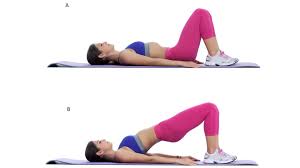
Bridges work a person’s gluteus maximus, which is the large muscle of the buttocks. People engage this muscle when they move their hips, particularly when they bend into a squat.
The gluteus maximus muscle is one of the most important muscles in the body, and keeping it strong can help support the lower back.
To perform a bridge:
- Lie on the ground and bend the knees, placing the feet flat on the floor hip-width apart.
- Press the feet into the floor, keeping the arms by the sides.
- Raise the buttocks off the ground until the body forms a straight line from the shoulders to the knees.
- Squeeze the buttocks with the shoulders remaining on the floor.
- Lower the buttocks to the ground and rest for a few seconds.
- Repeat 15 times and then rest for 1 minute.
- Do 3 sets of 15 repetitions.
2. Knee-to-chest stretches

Doing a knee-to-chest stretch can help elongate the lower back, relieving tension and pain.
To perform the knee-to-chest stretch:
- Lie on the back on the floor.
- Bend the knees, keeping both feet flat on the floor.
- Use both hands to pull one knee in toward the chest.
- Hold the knee against the chest for 5 seconds, keeping the abdominals tight and pressing the spine into the floor.
- Return to the starting position.
- Repeat with the opposite leg.
- Repeat with each leg 2–3 times twice a day.
3. Lower back rotational stretches
The lower back rotational stretch can help relieve tension in the lower back and trunk. It also gently works the core muscles to improve stability.
To perform the lower back rotational stretch:
- Lie back on the floor with bent knees and feet flat on the ground.
- Keeping the shoulders firmly on the floor, gently roll both bent knees over to one side.
- Hold the position for 5–10 seconds.
- Return to the starting position.
- Gently roll the bent knees over to the opposite side, hold, and then return to the starting position.
- Repeat 2–3 times on each side twice a day.
4. Draw-in maneuvers
The draw-in maneuver works the transversus abdominis. This muscle is on the front and side of the abdomen, stabilizing the spine and lower back region.
To perform the draw-in maneuver:
- Lie back on the floor with knees bent and feet flat, keeping the arms by the sides.
- Breathe in deeply.
- While breathing out, pull the belly button toward the spine, tightening the abdominal muscles and keeping the hips still.
- Hold the position for 5 seconds.
- Repeat 5 times.
5. Pelvic tilts
The pelvic tilt exercise can release tight back muscles and keep them flexible.
To perform this lower back flexibility exercise:
- Lie back on the floor with knees bent and feet flat, keeping the arms by the sides.
- Gently arch the lower back and push the stomach out.
- Hold for 5 seconds, then relax.
- Flatten the back and pull the bellybutton in toward the floor.
- Hold for 5 seconds, then relax.
- Increase the number of repetitions daily, building up to 30.
6. Lying lateral leg lifts
Lying lateral leg lifts work the hip abductor muscles. These muscles support the pelvis and can help reduce strain on the back.
Keeping these muscles strong is essential, as they help a person maintain their balance and can affect mobility.
To perform lying lateral leg lifts:
- Lie on one side with the legs together.
- Keep the lower leg slightly bent.
- Draw the bellybutton into the spine to engage the core muscles.
- Raise the top leg about 18 inches, keeping it straight and extended.
- Hold the position for 2 seconds.
- Repeat 10 times.
- Turn onto the other side of the body and repeat, lifting the other leg.
- Perform 3 sets on each side.
7. Cat stretches
The cat stretch can help lengthen the back, make it stronger, and ease tension in the muscles.
To perform the cat stretch:
- Get onto the hands and knees with the knees hip-width apart.
- Arch the back, pulling the belly button up toward the spine.
- Slowly relax the muscles and allow the abdomen to sag toward the floor.
- Return to the starting position.
- Repeat 3–5 times twice a day.
8. Supermans

A person needs strong back extensors to maintain good posture. These muscles run along either side of the spine.
Weak back extensors can reduce spinal and pelvic support, but doing an exercise called a “Superman” can help.
To perform a Superman:
- Lie face down on the ground and stretch both arms out in front of the body, keeping the legs stretched out and flat on the ground.
- Raise both the hands and feet, aiming to create a gap of about 6 inches between them and the floor.
- Try to pull in the belly button, lifting it off the floor to engage the core muscles.
- Keep the head straight and look at the floor to avoid neck injury.
- Stretch the hands and feet outward as far as possible.
- Hold the position for 2 seconds.
- Return to the starting position.
- Repeat 10 times.
9. Seated lower back rotational stretches
The seated lower back rotational stretch helps relieve pain, working the core muscles and strengthening the lower back.
To perform the seated lower back rotational stretch:
- Sit on a stool or chair without arms, keeping the feet flat on the floor.
- Twist at the core to the right, keeping the hips square and the spine tall.
- Position the hands behind the head or place the left hand on the right knee to support the stretch.
- Hold the position for 10 seconds.
- Repeat the exercise on the left-hand side.
- Repeat on each side 3–5 times twice a day.
10. Partial curls
Strong abdominal muscles play a significant role in supporting the spine and can also help keep the hips properly aligned.
Weak abdominals can result in poor core strength and lack of stability, which can cause lower back pain. Curls and partial curls help build a strong core.
To perform partial curls:
- Lie back on the floor and bend the knees, keeping the feet flat and hip-width apart.
- Cross the hands over the chest.
- Breathe in deeply.
- On the breath out, engage the abdominal muscles by pulling in the stomach.
- Gently raise the head and shoulders 2 inches off the ground while keeping the neck in line with the spine.
- Hold for 5 seconds then return to the starting position.
- Repeat the exercise 10 times.
- Perform 3 sets.

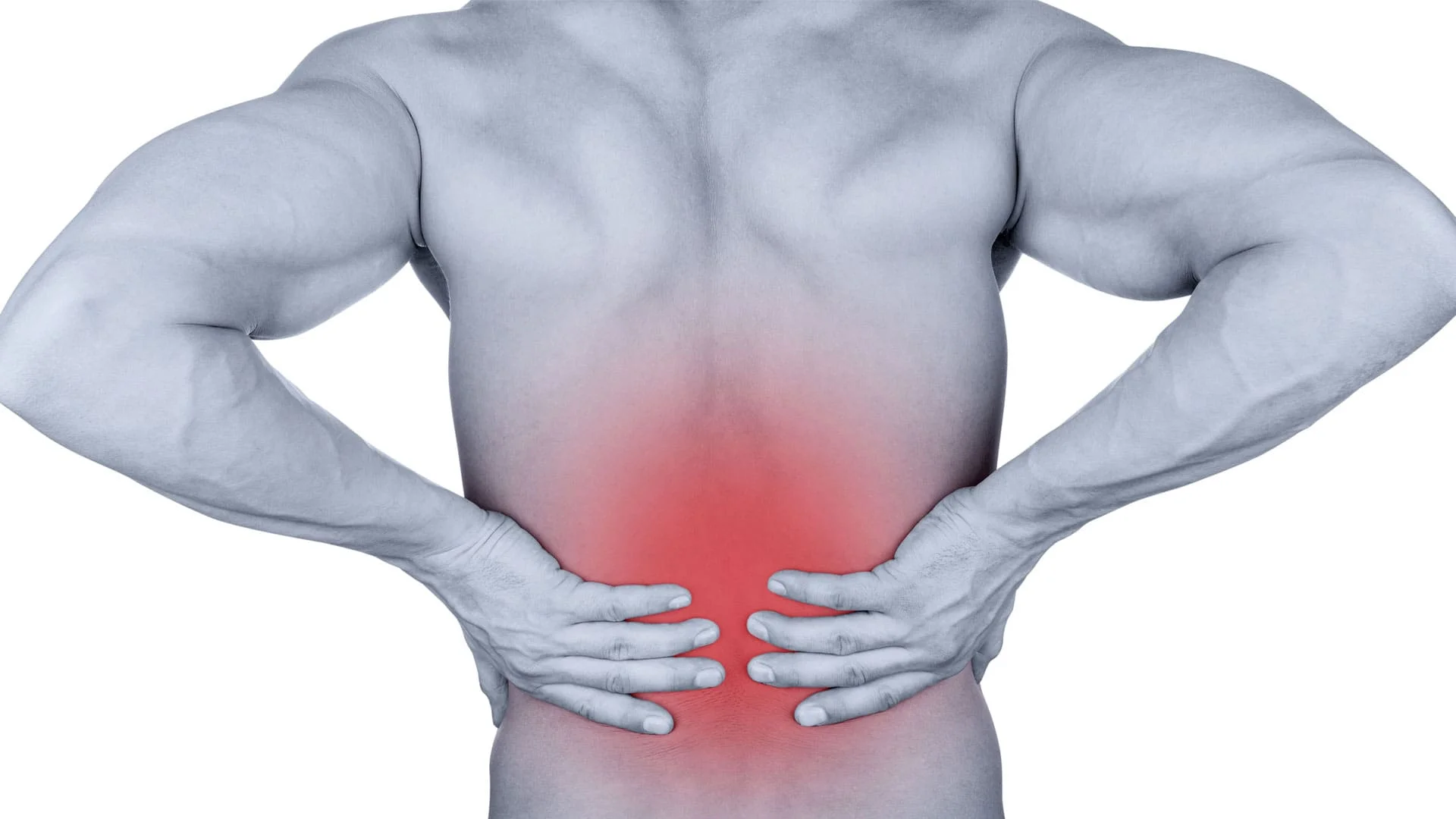

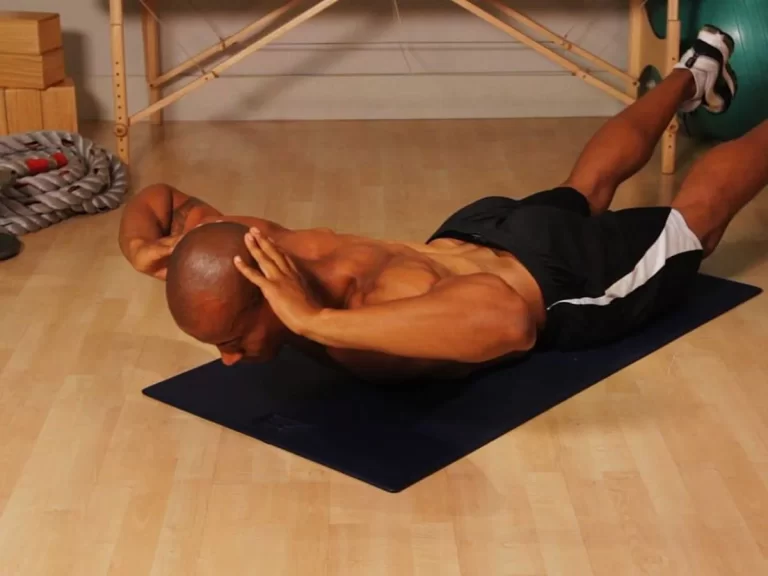
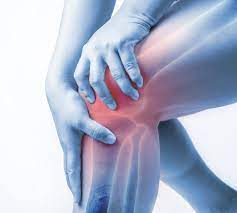


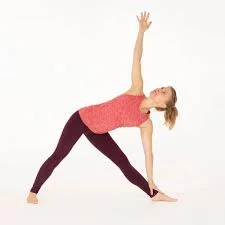
36 Comments